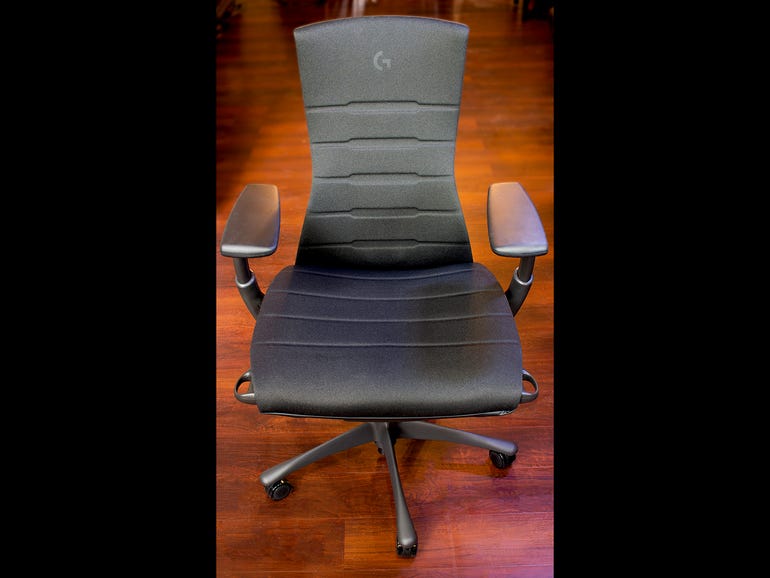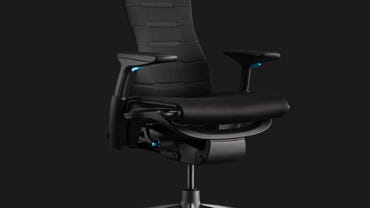Herman Miller Embody Gaming Chair review: Seating’s endgame?
Herman Miller has long been one of the most respected names in home and office furniture. Its
famous Aeron chair
, released in 1994, remains one of the most popular and sought-after office chairs today. It’s important to know this history because those are the shoes Herman Miller’s Embody had to fill when it launched in 2009, and was slightly tweaked to be a gaming chair in 2020.
The Embody eschews the mesh-based support of the Aeron in favor of a design that supports the human body by using its own anatomy as inspiration. The result is an unusual-looking model with unique support characteristics and ample adjustability. Its futuristic aesthetics likely also played a part in Herman Miller’s subsequent decision to bring its Embody chair into the gaming space.
Designed in collaboration with gaming and PC peripheral maker Logitech, the Herman Miller Embody Gaming chair mirrors the design and structure of the original, adding a unique color scheme and additional padding. Today we’ll be looking at how well it performs as not just a seat to game in, but an all-day solution for your home office as well.
Like
- Flexible seat and back move with you throughout the day
- Numerous adjustments help fine tune it to any user
- Pixelated Support system combines the best of fabric and mesh seats
- Aesthetic choices to please gamers and professionals
Don’t Like
- Arm adjustments are coarser and less plentiful than you’d expect
- Pricing puts it out of the reach of many customers
- Casters have middling performance on thicker carpet
Design
the original Embody
as being designed “with the input of more than 30 physicians and PhDs in biomechanics, vision, physical therapy, and ergonomics.” For the Logitech version, the company added additional research into “what gamers need from their chairs.” On paper, this should result in an ideal chair for a full day’s work and whatever gaming you might get up to after hours.
To support these extended hours, the Embody relies on unique support systems for its seat and back.
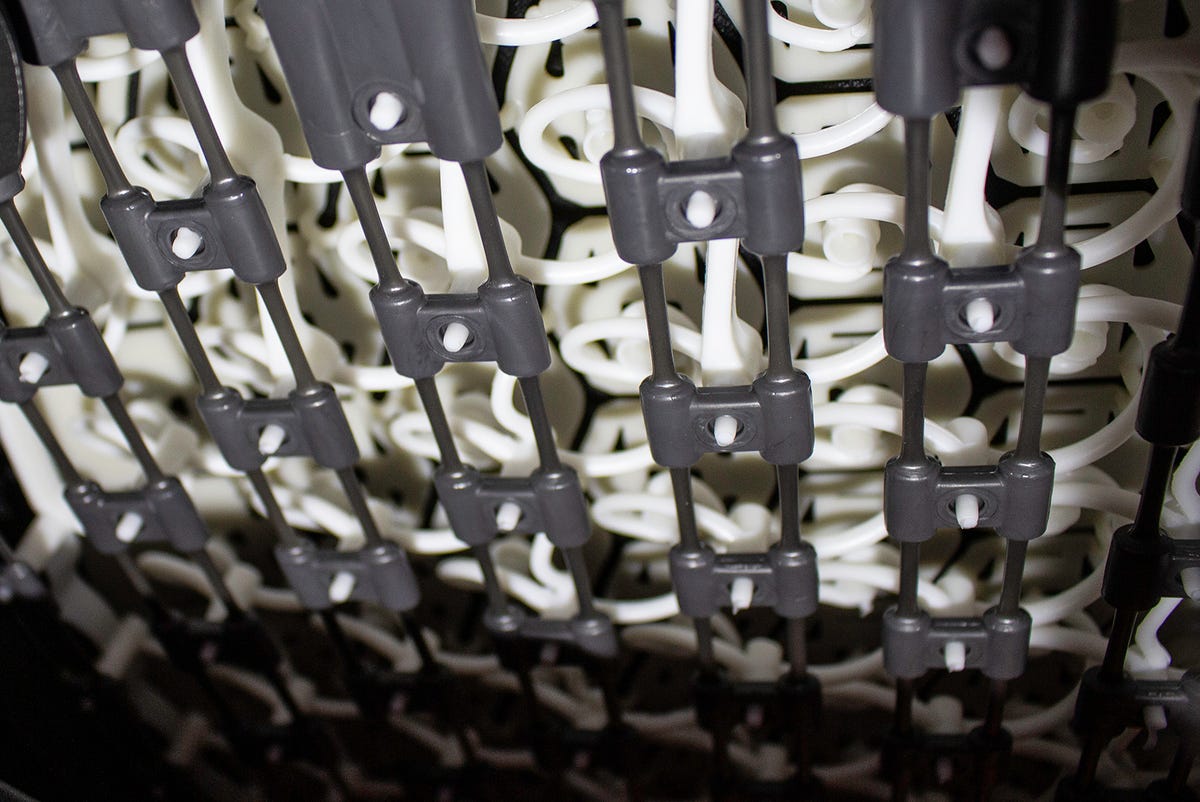
The Embody Gaming Chair’s seat seen from below
Michael Gariffo
The seat uses a series of springs that might look more at home in a mattress than a chair. This is part of its “Pixelated Support” system that includes four layers: a base of flexible support straps, the aforementioned spring suspension system, a layer of “copper-fused cooling foam,” and Herman Miller’s proprietary Sync fabric on top.
For the back, Herman Miller created a two-part system. The structural portion mounts to a central pillar that is visually and ergonomically designed to mirror the human spine. This primary support holds a complex array of pivoting, flexible sub-structures that attempt to offer complete support across the user’s entire back, while providing enough flexibility to maintain an active sitting position and posture throughout the day.
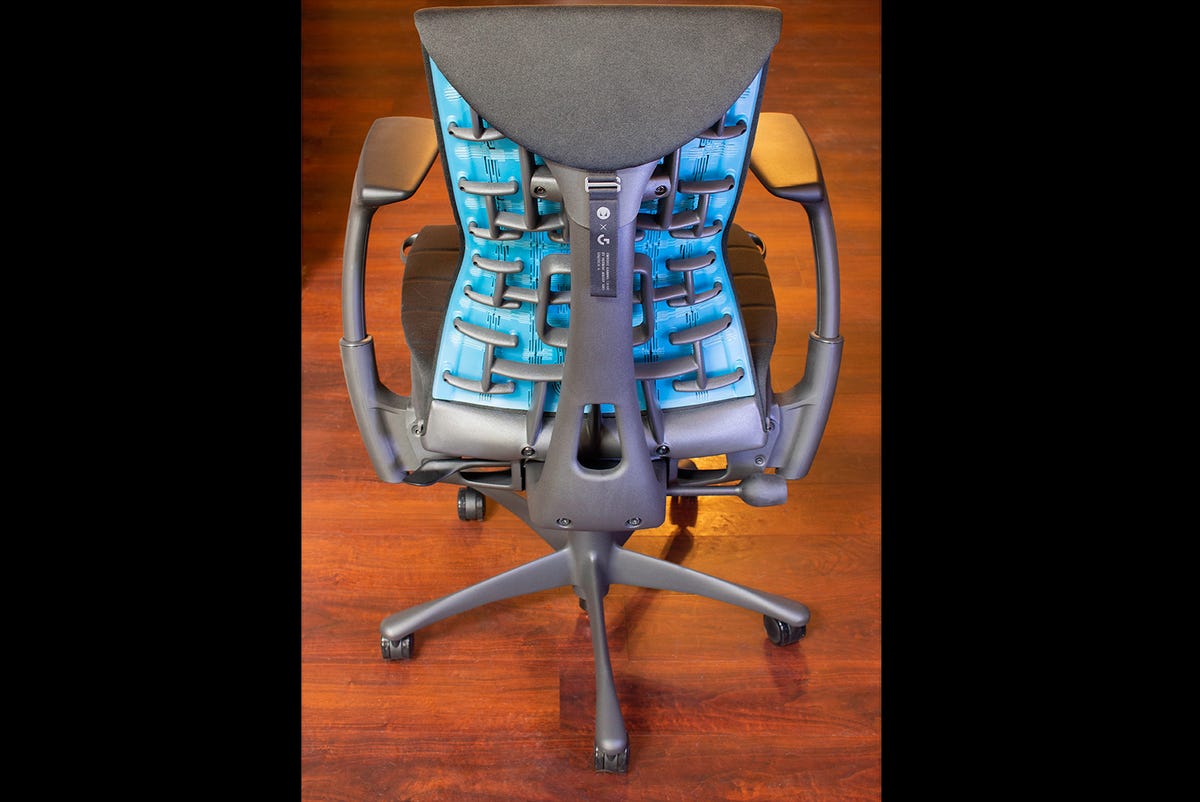
Michael Gariffo
The backrest’s rubbery material is heavily perforated to encourage ventilation and to allow it to conform to each user’s unique shape. The combination of complex components is what Herman Miller calls its “PostureFit” spinal support system and its “Backfit” adjustment system, which we’ll cover in more detail later.
While the seat and back of the Embody may seem futuristic, the base and arms are mundane by comparison. The base consists of a typical five-pointed design terminating in casters designed for either hard floors or carpets. Meanwhile, the arms are adjustable across their height and width dimensions, but they lack some of the more varied adjustments found in many competing office and gaming chairs. We’ll talk more about this deficit later in the review.
More: Secretlab TITAN Evo 2022 Series review: The best gaming chair levels upShipping and setup
Shipping and setup
This will be a very short section thanks to Herman Miller’s excellent decisions. The Embody Gaming Chair arrives fully assembled and ready to use.
Inside the well-designed, very large box, you’ll find the chair, a single empty box used as packing support, and several layers of plastic wrapping. Once I’d rolled the chair out of the box and removed the wrappers, I was ready to try out my new seat within just a couple of minutes.
Adjustability
We’re going to detail each of the available adjustments Herman Miller includes with the Embody, with a short summary of their purpose.

The seat height joystick within the tilt tension knob
Michael Gariffo
-
Seat height: This is one everyone should be familiar with. It’s available on even the most basic office chairs. Here it can be activated by pulling up on the small joystick inside the Tilt tension knob located below the right side of the seat. Doing so while seated will lower the chair, or raise it if you’ve taken your weight off the seat.
-
Tilt tension: This knob, referenced above, controls how much force is required to recline in the Embody. Turning it clockwise increases the required tension, making it harder to lean back. Turning it counter-clockwise does the opposite.
-
Seat depth: This is a rarer adjustment usually found on more high-end chairs, and the way the Embody handles it is particularly unique. The depth of the seat can be adjusted by grasping the handles located at the front corner of the seat, lifting them, and pulling away from the chair’s back or toward it. The fabric and support at the seat’s front edge work like a window shade, unfurling when pulled forward or rolling up when pulled back.
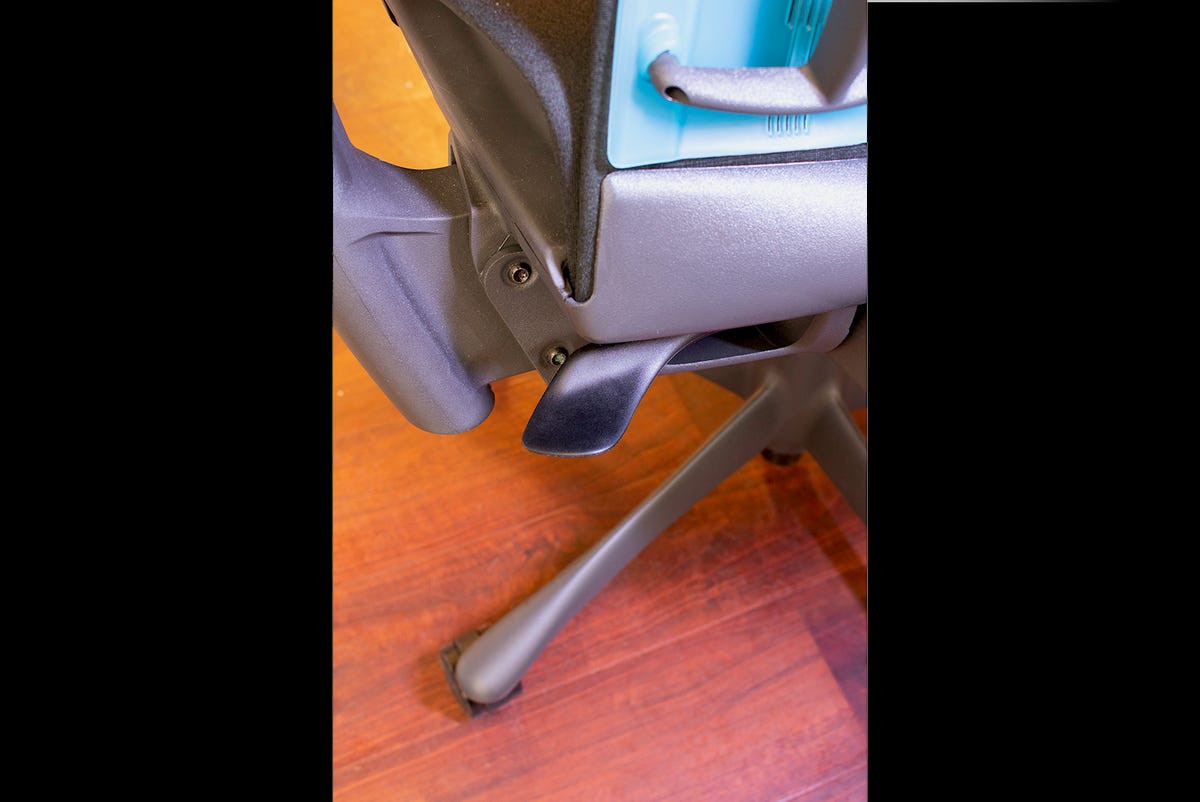
The tilt limiter lever
Michael Gariffo
-
Tilt limiter: This controls how far back the chair can recline. The Embody uses a small lever with a total of three positions. The highest keeps the chair back fully upright, the middle allows a slight recline, and the bottom provides a significant tilt. Even at the lowest position, the recline is still fairly mild. The Embody was never meant to be the kind of office chair one could catch a quick nap in, which may be a pro or a con, depending on your priorities.
-
Arm height: A small button located beneath each arm rest unlocks this adjustment, providing a total of eight levels of height. The arms are tensioned so that they don’t drop or rise when the button is pressed, but require a bit of force to move in either direction. Due to the curvature of the arms’ construction, they will also move inward or outward slightly, depending on the height selected. This horizontal positioning can also be controlled by the next adjustment.
-
Arm width: Unlike every other adjustment on the Embody, the arm width setting requires only brute force. Pushing outwards or inward will set the arms in one of three positions. At their tightest, they’re a bit too snug for my comfort, while at their widest, they offer ample space for me to cross my legs. The curved arm construction also means that the arm pads will sit slightly tilted, inward or outward, depending on how you position their width and height.
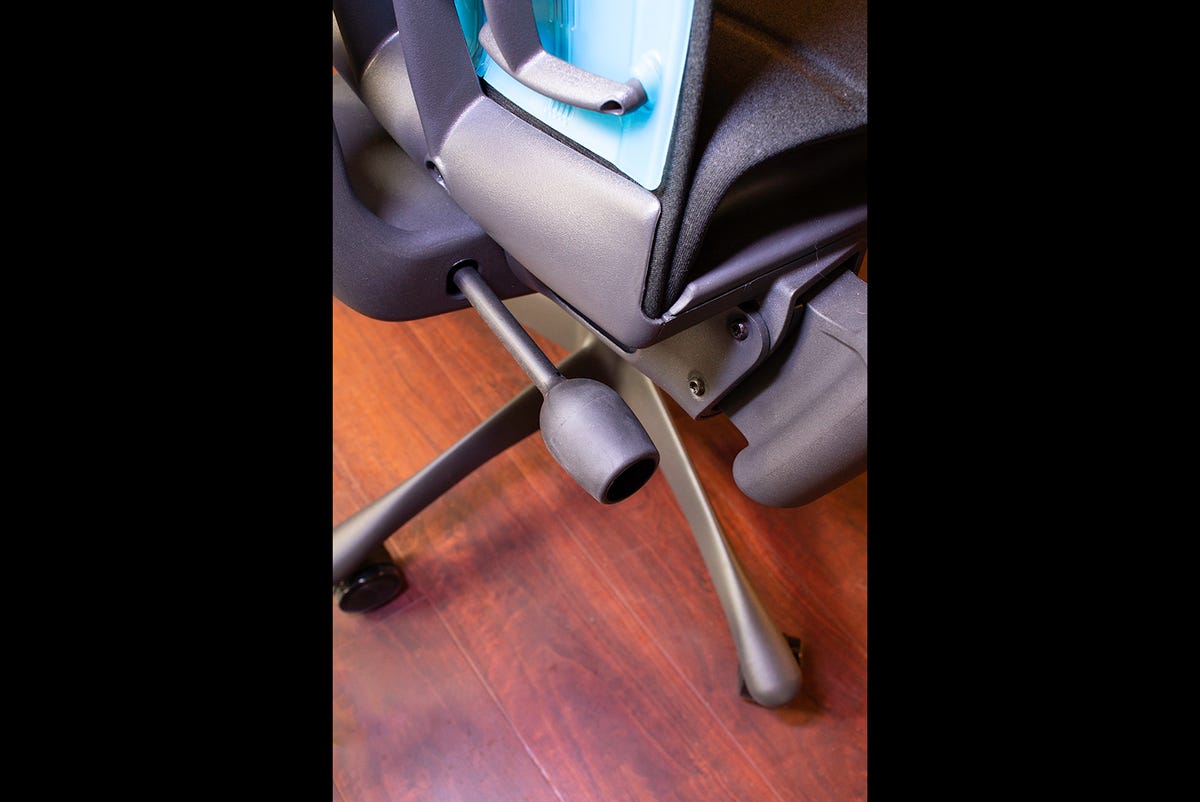
The Backfit adjustment knob
Michael Gariffo
-
Backfit adjustment: Last up is Herman Miller’s proprietary Backfit adjustment, which can best be described as a way to adjust the level of lumbar support the chair provides. The manufacturer recommends turning the control knob, located behind the tilt tension knob, clockwise for a more upright, active posture, and counter-clockwise for a more relaxed or reclined posture. This also helps the back’s support system conform to your spine’s unique curvature.
Comfort
There’s an ongoing war between two factors in high-end office chairs: ergonomics and comfort. In an ideal world, these two factors would mean the same thing. Unfortunately, in our reality, they can be very different. A chair designed to provide a very healthy sitting position from an ergonomic standpoint may actually feel quite uncomfortable, especially at first. Similarly, a chair that feels very comfy when you first sit in it might be doing long-term harm to your back and joints with its poor ergonomics.
Balancing these characteristics is something every furniture maker struggles with, and something Herman Miller has long prided itself on getting right. Of course, it’s entirely up to each owner just how “right” the Embody gets it for their unique form and use case.
It’s probably useful to note that I’m about 6 foot, 2 inches tall and about 190 pounds. Obviously, body types vary greatly, even among individuals that share height and weight metrics, but it’s still a handy guidepost given what a subjective thing comfort can be, even without size variables. This subjectivity can even vary between the individual components of a chair. For that reason, we’ll cover the seat, back, and arms individually.
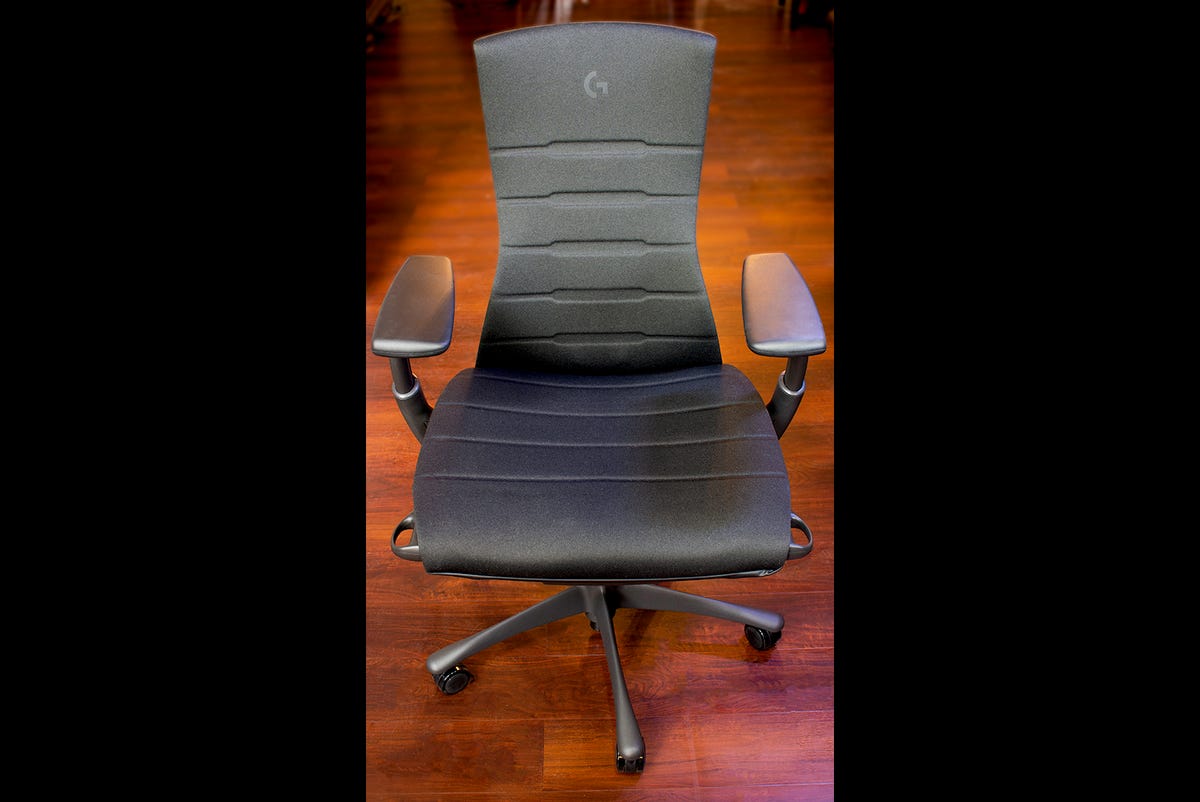
A front view of the Embody Gaming Chair with the seat depth handles visible on either corner
Michael Gariffo
The seat
In many ways, the Embody’s seat feels like a hybrid between a mesh-style seat like the Aeron’s and its many imitators, and a fabric seat like those found on many generic office chairs. This is thanks to the multi-layer design mentioned above. It lends itself to the sensation of being suspended somewhat weightlessly atop the seat. The unusually wide seat pan increases this sensation.
The feeling of supportive, zero-gravity suspension extends to the front edge. The Embody includes one of the few seats I’ve found that, no matter how long I spent in it, never caused any uncomfortable pressure on the backs of my thighs.
While I eventually found the sitting experience to be one of the most comfortable I’ve ever had, there was some slight pressure on either side of the seat during my first few days of use. I was initially concerned the Pixelated Support system was detectable through the foam and fabric layers, an issue I’d heard some other users experienced. Thankfully, this sensation faded after a couple of days. I’m not sure if the seat adjusted to me, or if I adjusted to the seat. Either way, the Embody lets me work a full day, with a few extra hours of entertainment on top, all without any residual soreness.
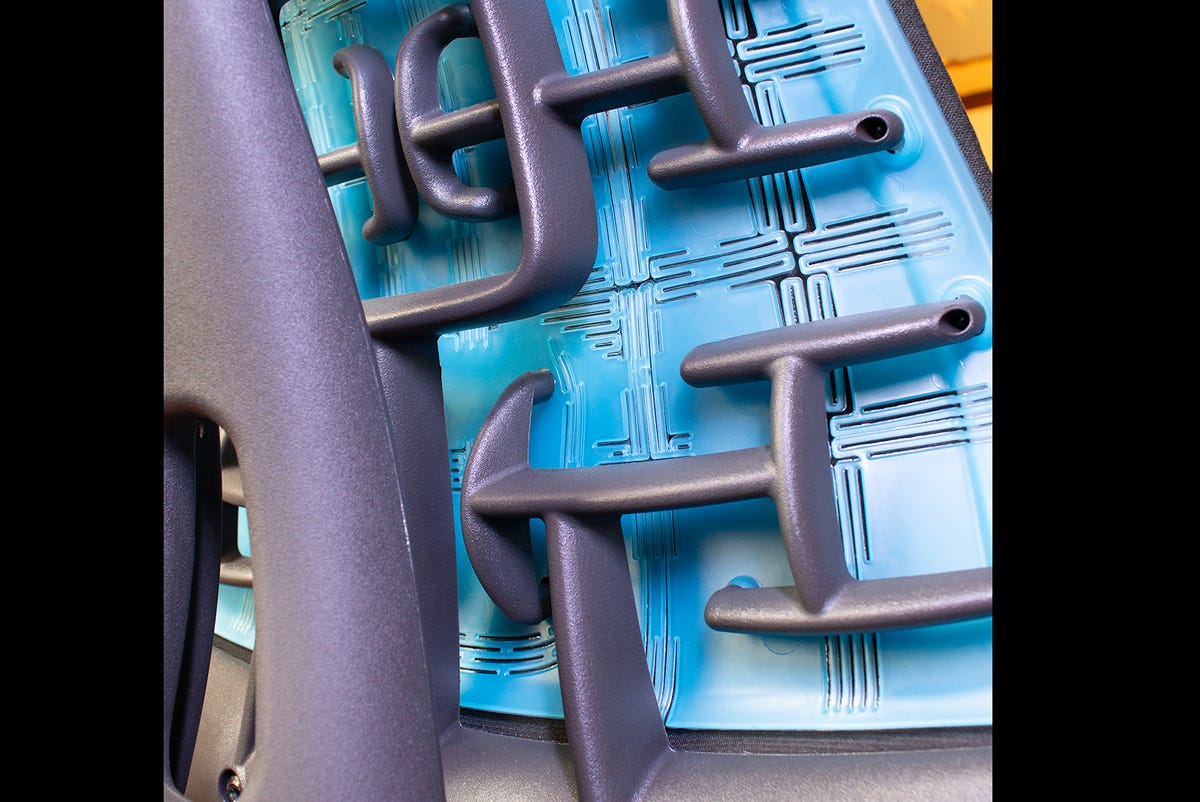
Michael Gariffo
The back
As with the seat, the Embody’s back took a bit of getting used to. It only comes up to the top of my shoulder blades. At first, I worried it wouldn’t be supportive enough. I’m used to office chairs with higher backs and headrests. However, I realized quickly that it was actually more than enough height due to how well the back conformed to me.
It’s an interesting experience adjusting to the Embody’s style of backrest. We all occasionally stretch during the day. But, rather than sitting up or standing to do it, I’ve gotten into the habit of stretching with the backrest tight against my spine. This is possible because of the incredible flexibility of the back’s Pixelated Support system. To be clear, this level of flexibility does not mean the back is flimsy or easily bent. It just has an uncanny ability to precisely balance the force my body is placing against it with an equal level of support. The result is, like the Embody’s seat, an almost weightless sensation.
Even with all of this praise, I would caution any potential buyers that are taller than me. I feel a few more inches of height, enough to put the top of the backrest below my shoulder blades, would have taken it from an ideal backrest height to one that was a little too low to be fully supportive.
The arms
The Embody’s arms are its weakest feature. This is not to say they are uncomfortable. Just the opposite is true. They’re some of the most comfortable arm pads I’ve ever used, and adjustable enough to provide me with an ideal orientation for my desk setup.
More: Best desks: Your home office called. It wants a new desk
My concern over the arms actually stems from two things: the range of those adjustments, and the method of adjustment.
The range is, for a chair this expensive, surprisingly limited. The Aeron and many cheaper gaming and office chairs feature arms with height, width, rotation, and depth adjustments. The Embody limits that to just height and width. The width also affects the tilt of the arm pads, which can result in them being angled disconcertingly inward when their width is set to the minimum position. Lucky for me, the width and height options happened to combine to a point where their position felt perfect. However, I fear that won’t be the case for a large portion of the Embody’s intended user base. Those extra adjustments would have made an excellent chair nearly perfect.
The aforementioned width adjustment is also one of the more disconcerting aspects of the chair. Whereas every other adjustment feels precise and reliable, the process of adjusting the arm width feels like, well, you’re breaking something. The adjustment takes more force than one would expect to need and the arms give way with an alarming sound. While I’m sure no real damage is being done to the chair by utilizing the adjustment, it’s still an unpleasant experience that was surprising to find on what was otherwise such a precision-made seat.
Everything else
We’ve covered all of the major parts of the Embody, but what about the smaller features, the ones that often make or break an overall experience?
One of the most important of these in an office chair tends to be its casters. In this case, the Embody’s casters are decent, but not great. My home office has fairly thick carpeting that grinds many other casters to a halt. While the Embody is able to roll on it, doing so requires a significant amount of force. For what it’s worth I’ve used inexpensive, in-line skate-style replacement casters (which are fully compatible with the Embody) that allow chairs to roll equally well on any surface. So, if you’re considering it, I wouldn’t let that relatively tiny extra cost stop you from buying it.
Another small feature that one might overlook is the texture of the Sync fabric. Like many of you, I’m a pet owner. So, my Embody has to stand up to everything from long, coarser Golden Retriever fur, to shorter, downy cat hair. While it doesn’t exactly repel pet hair, it is one of the easiest fabrics I’ve ever used when it comes time to clean the hair off. It doesn’t hold the fur, nor does it take any more than a quick swipe with a lint roller to get rid of whatever does stick.
More: Best vacuum for pet hair: Dyson isn’t the only option
Lastly, there’s the matter of aesthetics. This is, of course, just as subjective as the seat’s comfort. But, I find the Embody Gaming Chair’s cyan and black color scheme and subtle embossing creates an excellent balance of a high-end, understated design with just enough of the gamer aesthetic to satisfy both camps.
Wrap up
You may think I’m guilty of ignoring the elephant in the room by leaving any reference to the chair’s price until now. I left that matter until now not because I feel like it’s disqualifying, but rather because I wanted to address the end-user experience of the Embody before attempting to help you decide if that experience might be worth its significant cost for you.
The Embody Gaming Chair launched at $1,595. Since then, the price has risen to $1,795 alongside similar inflation-driven price jumps across Herman Miller’s own catalog, and office seating options from many other manufacturers. Obviously, this price puts it out of the range of many buyers.
To be clear, that cost is simply not worth it for every buyer. However, if you’ve run into as many disappointing chairs as I have over the years, including models almost as expensive as the Embody, your opinion of the value proposition offered by its current price point may begin to shift. But, please know this viewpoint is coming to you from someone that regularly spends a minimum of eight to 12 hours per day in office chairs. If you use a standing desk, or simply don’t work at a desk or game more than a couple of hours per day, this chair is not for you.
More: Best standing desk converters: Rise up
However, if you frequently end your workday or marathon gaming sessions with a sore backside, stiff spine, or tingling in your overworked shoulders, I would recommend giving the Embody a shot. If you can try one before you buy it, you absolutely should. But, if the limited availability of demo models has you wondering if you should take the risk, take a close look at Herman Miller’s generous return policy and even more generous 12-year warranty. The risk might not be as high as you think, and you may find that, like me, you’ve discovered a sitting experience really this good really can be worth the price.

